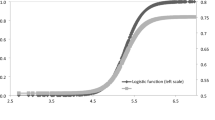Abstract
This paper studies how weather shocks affect agricultural outcomes in Bolivia at the farm-level. Using micro-data from the Bolivian Agricultural Survey of 2008 and 2015, satellite climate data, and a municipality level fixed effects model, we show that weather shocks, such as extreme temperature and extreme rainfall shocks have detrimental effects on Bolivian farmers’ yield. We also study how farmers cope with short-run weather extreme variations. We present our results differentiating by the climate risk areas and the geographic regions of Bolivia. On average, farmers that live in highlands municipalities experience greater reductions in yields and farmers that live in flood-prone municipalities increase the within farm labor supply in agricultural activities to cope with weather shocks. Our findings could orient policies toward mitigating the short-run implications of weather extreme variations.
I would like to thank Alex Armand, Joseph Gomes and Ivan Kim for their collaboration and suggestions. I am extremely grateful with all the staff from Instituto Nacional de Estadística de Bolivia—INE.
Access this chapter
Tax calculation will be finalised at checkout
Purchases are for personal use only
Similar content being viewed by others
Notes
- 1.
- 2.
Agricultural Productive Units (APU) (Unidades de Producción Agropecuaria, UPA) is defined in the 2013 Report of the Agricultural Census as all land that is used totally or partially in agricultural or livestock activities, regardless of size, tenure or legal status.
- 3.
For example, in lowlands, soybeans account for more than 75% of the cultivated crops; in highlands, 30% is quinoa, 25% is potato, 15% is alfalfa, and 10% is corn; while in valleys, 65% of the cultivated land is dedicated to corn, and 20% to potato.
- 4.
Our results do not change if we include observations below or above this 5 ℃ bound. In fact, as a robustness check we estimate \(t_{u}\) running different regressions with \(0 \le t_{u} \le 10.\)
Abbreviations
- JEL Codes :
-
O13; O12; Q12; Q15; Q51; Q54.
References
Acevedo S, Mrkaic M, Novta N, Poplawski-Ribeiro M, Pugacheva E, Topalova P (2017) World economic outlook, October 2017, seeking sustainable growth: short-term recovery, long-term challenges, chapter the effects of weather shocks on economic activity: how can low-income countries cope? pp 117–183. International Monetary Fund
Andersen LE and Verner D (2014, November). Social impact of climate change in Bolivia: a municipal level analysis of the effects of recent climate change on life expectancy, consumption, poverty and inequality. Latin Am J Econ Dev 22:49–83
Aragon FM, Oteiza F, Rud JP (2019) Climate change and agriculture: subsistence farmers’ response to extreme heat
Castro M (2018) Clusters de calidad de vida y cambio climático en Bolivia: Un análisis espacial multitemporal aplicando sistemas de información geográfica. Latin Am J Econ Dev 29:103–147
Delgadillo MF, Lazo A (2015) Evaluación de daños y pérdidas por eventos climáticos: Bolivia 2013–2014. Technical report, Unidad de Análisis de Políticas Sociales y Económicas (UDAPE)
Dell M, Jones BF, Olken BA (2014). What do we learn from the weather? the new climate-economy literature. J Econ Lit 52(3):740–798
Deschenes O, Greenstone M (2007) The economic impacts of climate change: evidence from agricultural output and random fluctuations in weather. Am Econ Rev 97(1):354–385
Eckstein D, Hutfils M-L, Winges M (2019) Global climate risk index 2019: Who suffers most from extreme weather events? weather-related loss events in 2017 and 1998 to 2017. Technical report, Germanwatch Nord-Sud¨ Initiative eV
Funk C, Peterson P, Landsfeld M, Pedreros D, Verdin J, Shukla S, Husak G, Rowland J, Harrison L, Hoell A et al (2015) The climate hazards infrared precipitation with stations–a new environmental record for monitoring extremes. Scientific data 2(150066)
Gorriti D, Gutierrez S (2014) Metodología para el cálculo del Índice de riesgo municipal con datos del censo 2012. Technical report, World Bank
IPCC (2014) Climate change 2014: synthesis report. contribution of working groups i, ii and iii to the fifth assessment report of the intergovernmental panel on climate change. techreport, IPCC
Schlenker W, Hanemann WM, Fisher AC (2006). The impact of global warming on U.S. agriculture: an econometric analysis of optimal growing conditions. Rev Econ Stat 88(1):113–125
Schlenker W, Roberts MJ (2009). Nonlinear temperature effects indicate severe damages to U.S. crop yields under climate change. Proc Natl Acad Sci 106(37):15594–15598
Author information
Authors and Affiliations
Corresponding author
Editor information
Editors and Affiliations
Rights and permissions
Copyright information
© 2020 The Author(s)
About this chapter
Cite this chapter
Daga, S. (2020). Weather Shocks’ Impacts on Farm-Level Agricultural Outcomes in Bolivia. In: Durante, J., Rosillo, R. (eds) Natural Disasters and Climate Change. SpringerBriefs in Economics. Springer, Cham. https://doi.org/10.1007/978-3-030-43708-4_2
Download citation
DOI: https://doi.org/10.1007/978-3-030-43708-4_2
Published:
Publisher Name: Springer, Cham
Print ISBN: 978-3-030-43706-0
Online ISBN: 978-3-030-43708-4
eBook Packages: EnergyEnergy (R0)




